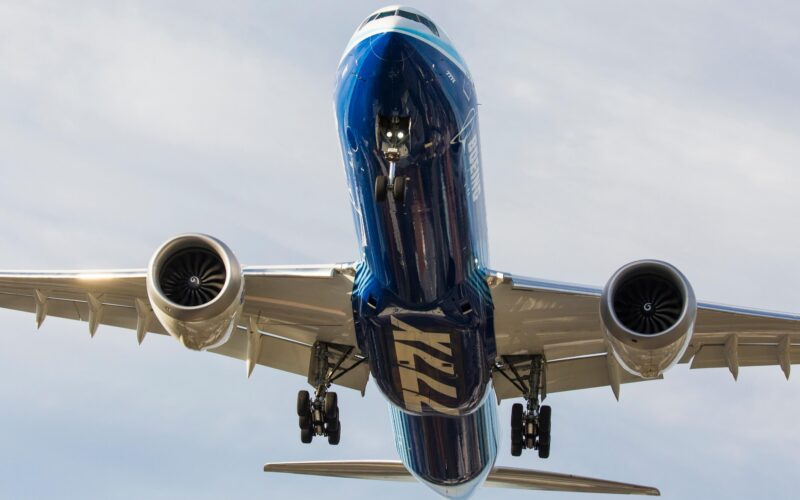Two years ago, on January 25, 2020, we saw the first flight of the highly anticipated Boeing 777-9, the latest series of the long-range, wide-bodied Boeing 777 family. The flight departed from Paine Field in Everett and after three hours and 52 minutes of flying, landed in Boeing Field, Seattle. The new generation aircraft has experienced mounting delays and is now expected to commence commercial flights in 2024 with launch customer Emirates.

Image; Arnold O. A. Pinto/shutterstock.com
Design and Development
Following the Airbus A350XWB program, Boeing launched the 777X program with two new variants, the 777-8 and 777-9. The idea was to stretch the hugely successful existing 777-200/300 models while installing new generation engines and incorporating newer technologies from the Boeing 787 to increase efficiency.
The 777-8 will directly compete with the A350-1000 as well as replace the older 777-200LR. It will seat around 384 passengers and allow a huge range of 16,170km.
The larger 777-9 will typically seat 426 passengers with a range of 13,500km, and will be the largest commercial aircraft available following the withdrawal of the Boeing 747 and Airbus A380 programs.
Boeing has also proposed the possibility of a 777-10X variant by further stretching the 777-9 to accommodate 450 passengers. Whether Boeing’s proposal attracts serious interest from airlines due to its retirement of the ageing A380 and 747 aircraft remains to be seen.
GE9X Engines
The new General Electric engines have been designed exclusively for the 777X and are the largest commercial jet engines in the world. They are the same size as the fuselage of the Boeing 737! These new engines are designed to deliver 10% fuel savings compared to the 777-300ER and are more efficient than any other comparable engine.

Image: Arnold O. A. Pinto / shutterstock.com
Composite Wings
The new composite wing design allows for a longer wingspan, which reduces fuel burn. Along with the redesigned wing comes a first in commercial aviation, folding wingtips. Once extended, the wings will be 3.5m longer, which will boost fuel efficiency. The reason for the fold is so that on retraction the aircraft will keep the same ICAO size category as the rest of the 777 family, allowing for simple airport integration. The extended wingspan on the 777-8 at 71.75m will be nearly two meters wider than the plane is long.

Image: Arnold O. A. Pinto / shutterstock.com
Delays
The 777X program has faced lengthy delays. Initially, the new GE9X engines faced difficulty gaining certification after several problems were discovered during testing. Then, the 777X faced fresh problems, including the failure of a cargo door, which blew off during airframe testing.
Along with existing challenges for Boeing relating to issues with its 737MAX, the global COVID-19 pandemic has compounded the delays. Deliveries of the new aircraft are not expected before 2024.
Who has ordered the 777X?
The 777X has received a total of 320 orders. Emirates, the launch customer for the 777X, has placed the largest order of 115 aircraft.
Emirates – 115
Ethiad – 25
Lufthansa (LHAB) (LHA) – 20
Qatar – 60
Singapore Airlines (SIA1) (SINGY) – 31
Cathay Pacific – 21
All Nippon Airways – 20
British Airways – 18
Unidentified – 10
In November 2021, the new generation aircraft made its international debut at the Dubai Airshow. Despite receiving no new orders, the world’s eyes are fixed on the aircraft as we await the introduction of the 777X.

